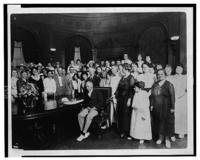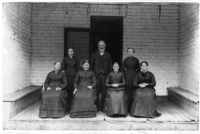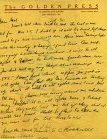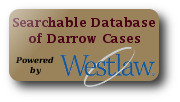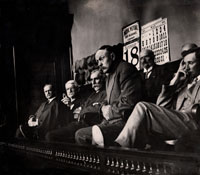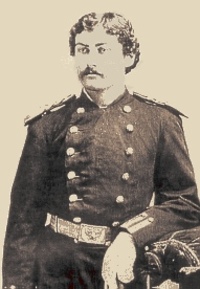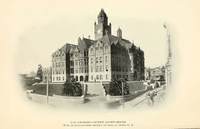The Bribery Trials of Clarence Darrow

"What am I on trial for, gentlemen of the jury? . . . I am not on trial for having sought to bribe a man named Lockwood. . . . I am on trial because I have been a lover of the poor, a friend of the oppressed, because I have stood by labor for all these years, and have brought down on my head the wrath of the criminal interests in this country. Whether guilty or innocent of the crime charged in the indictment, that is the reason I am here, and that is the reason that I have been pursued by as cruel a gang as ever followed a man."" – Clarence Darrow's closing argument in his first bribery trial, August 14, 1912.
"Gentlemen, it is with you—in the hands of these twelve men, strangers—strangers in a strange land; after my long career, after my hard fight, after all the bitterness and hatred of the past, I come to you worn and weary, and tired, and submit my fate, the fate of my family, and the hopes and fears and the prayers of my friends, to you." – Clarence Darrow's closing argument in his second bribery trial, March 7, 1913.
This deposition was given by George Burman Foster in support of Clarence Darrow's character, and is one of over 50 depositions conducted by Edgar Lee Masters on Darrow's behalf. Foster was a professor of philosophy of religion and a famous theologian at the University of Chicago from 1905 until his death in 1918. Darrow was very good friends with Foster, whom he considered one of the most learned men he had ever met. Darrow gave a eulogy at Foster's funeral.
The People of the State of California, Plaintiff, vs. Clarence Darrow, Defendant. Reporters' Transcript.Contains 90 volumes covering May 24, 1912 through August 16, 1912 of Clarence Darrow's first bribery trial. Missing p. 7430-7830 containing Darrow's closing address to the jury on August 14 and 15, 1912. Courtesy of the LA Law Library.
Plea of Clarence Darrow in His Own Defense to the Jury that Exonerated Him (1912).
Clarence Darrow's plea to the jury during his first bribery trial published in pamphlet form.
Clarence Darrow's Argument to the Jury (Second Bribery Trial).Reporter's transcript of Clarence Darrow's argument to the jury on March 5, 1913 during his second bribery trial (The People of the State of California v. Clarence Darrow).
Argument of Judge O.W. Powers (1913).Closing argument of Orlando Woodworth Powers in defense of Clarence Darrow during his second bribery trial. Powers was formerly a judge in Salt Lake City, Utah but he had just moved to Los Angeles to practice law. Courtesy of the Social Movements Collection, Hamilton Library, University of Hawaii at Manoa Honolulu, Hawaii.
In 1910 a poor woman came to Clarence Darrow and begged him to help her son George Bissett who had been convicted for murder and sentenced to life in prison. At first Darrow told her he could not help, but he eventually took the case for free because they had no money to pay for legal help. Upon examining the trial record, Darrow concluded that Bissett should not have been convicted. Darrow got the conviction reversed by the Supreme Court of Illinois and the case was remanded for a new trial. Darrow defended Bissett in the new trial and he was found not guilty. In 1912 while he was waiting to be indicted for jury bribery based on the grand jury testimony of Bert Franklin, Darrow was informed he had a visitor. It was George Bissett, who had ridden freight-cars all the way from Illinois to Los Angeles because he heard that Darrow was in trouble. Bissett had come to help and explained: "I have been here about a week and have been getting a line on Franklin." When Darrow asked what he had found out about Franklin, Bissett said he "had found where he lived, had watched what time he went away in the mornings, had some dynamite, and was going to kill Franklin the next day when leaving his home." Darrow talked him out of this action.
Clarence Darrow was charged with jury bribery under this California penal code.
Orlando Woodworth "O.W." Powers who had recently moved to Los Angeles from Utah helped defend Clarence Darrow during his second bribery trial. While in Utah, Powers served as the special prosecutor representing the United States during the prosecution of Mormons for polygamy. Powers sent 4,000 Mormons to prison while enforcing the Edmunds-Tucker Act as a prosecutor or during the brief time he served as Associate Justice of the Supreme Court of Utah. He was appointed to the Supreme Court of Utah by President Cleveland in 1885. Powers later became an important defender of Mormons who gave up polygamy and fought to protect them from religious prosecution. He later advocated that those sentenced to prison for polygamy be released and nearly all were released.
Short anecdote about Judge Conley who presided over Clarence Darrow's second bribery trial. Published in the Central Law Journal (1913).
Gerald F. Uelmen, Fighting Fire with Fire: A Reflection on the Ethics of Clarence Darrow, 71 Fordham L. Rev. 1543 (2003).Law review article that examines the police and prosecutorial misconduct faced by Clarence Darrow during his defense of the McNamara brothers and William Haywood and compares these actions to the accusations of misconduct by Darrow himself.
Presentation given by Clarence Darrow at the Heilig Theatre, Portland, Oregon on September 10, 1912.
Account of verdict in Darrow's first bribery trial. Published in The American Employer.
Darrow's Trial (1912).Criticism of a resolution adopted by the Los Angeles Labor Council protesting against the district attorney prosecuting Clarence Darrow in another bribery trial. From The American Employer.
Darrow Trial Lincoln Steffens Testified He Tried to Save McNamara (1912).Short description of some events during Clarence Darrow's first bribery trial. Published in The American Employer.
Severe Arraignment of Steffens (1912).Sharp criticism of Lincoln Steffens' testimony during Clarence Darrow's bribery trial. Also contains a short description of the McNamara Defense Fund. From The American Employer.
Machinists' Monthly Journal: Devoted to the Technical and Economic Education of the Members of the I. A. of M. (1912).Brief commentary on Clarence Darrow's bribery trial and banquet held in Darrow's honor by labor supporters.
Darrow, The Enigma (1912).Commentary about Clarence Darrow in the Railway Carmen's Journal.
Commentary in support of Clarence Darrow (1912).Short commentary on Clarence Darrow and the bribery charges against him. Published in Out West: A Magazine of the Old Pacific and the New, by Archaeological Institute of America Southwest Society, Sequoya League.
Darrow Jury Disagreed (1913).Brief account that accurately predicts that the prosecution will drop the charges after the second trial ended in a hung jury. Published in The American Employer.
The Defender of the Defenseless.Support for Clarence Darrow from The Bridgeman's Magazine.
Clarence Darrow To Be Again Tried (1913).The Boilermakers Journal published this appeal for donations to help Clarence Darrow face a third bribery trial. The prosecution later agreed not to try Darrow.
Headline article about the verdict in Clarence Darrow's first bribery trial in The Daily Capital Journal, August 17, 1912 (Salem, Oregon).
Orlando W. Powers Dead.Announcement that Orlando Powers died on January 2, 1914. Powers helped to defend Clarence Darrow during his second bribery trial. The news article briefly describes Powers involvement in prosecuting Mormons for polygamy.
Study of a Chicago labor leader only identified as "Anton." It is common knowledge that the "Anton" is Anton Johannsen who would later play an important role in San Francisco labor and during the McNamara case and Darrow's bribery trials. The prosecution believed Johannsen and Olaf Tveitmoe arranged for the bombing of the Los Angeles Times building. Johannsen was very angry at Darrow for the way he handled the McNamara case but he, Tveitmoe, and some other labor leaders tried to help Darrow during his bribery trials because it would be disastrous for labor if Darrow was convicted. Hapgood was a friend of Clarence Darrow and his book contains several references to Darrow.
Clarence Darrow hired Henry Gage, a well respected defense attorney and former governor of California, to defend Bert Franklin against bribery charges. Darrow paid the $10,000 retainer out of the McNamara defense fund. Bio is from the History of the Bench and Bar of California.
Judge Orlando Powers.1902 biography of Judge Orlando Powers when he was a judge in Salt Lake City Utah. In 1913, he helped defend Clarence Darrow in his second bribery trial. From "Portrait, Genealogical and Biographical Record of the State of Utah: Containing Biographies of Many Well Known Citizens of the Past and Present.
Wheaton Gray (1909).Short bio of Wheaton Gray, appointed as special prosecutor in Clarence Darrow's second bribery trial.
Judge George H. HuttonBio of Judge Hutton who presided over Clarence Darrow's first bribery trial in 1912. Published in Out West: a Magazine of the Old Pacific and the New (1909).
Earl Rogers, Esq.: A Noted Criminal Defense Lawyer (1910).Article about Earl Rogers who lead the initial investigation into the bombing of the Los Angeles Times building. He later defended Clarence Darrow against charges of jury bribery. Coincidently, the article was published on the same day the Los Angeles Times was bombed.
Earl Rogers (1912).Short bio of Earl Rogers who played a crucial role in the investigation of the Los Angeles Times bombing investigation and later as Clarence Darrow's defense attorney in his bribery trials. Published in the History of the Bench and Bar of California.
Le Compte Davis (1912).Bio of Le Compte Davis. He was a prominent Los Angeles criminal attorney who worked with Clarence Darrow during the McNamara defense, helped defend Darrow against bribery charges and was a witness during Darrow's bribery trials. Published in the Press Reference Library (1912).
Judge George H. Hutton (1912).Bio of Judge Hutton who presided over Clarence Darrow''s first bribery trial in 1912. Published in the Press Reference Library: Notables of the Southwest, Being the Portraits and Biographies of Progressive Men of the Southwest, who Have Helped in the Development and History Making of this Wonderful Country, (1912).
Letters Written to Clarence DarrowCollection of letters written to Clarence Darrow during his bribery trials in 1912 to 1913. Includes letters from Anton Johannsen (San Francisco labor leader), William Marion Reedy (editor and owner of the editor of the St. Louis Mirror), Richard Pettigrew (former Senator for South Dakota), and Jerry Geisler (assistant in Earl Rogers law firm). Clarence Darrow Papers, Manuscript Division, Library of Congress, Washington, D.C.
An Appeal for Aid (1913).This letter to members of organized labor appeals for financial aid to help Clarence Darrow in a looming third bribery trial. Published in the Railway Carmen journal, this appeal is signed by several labor leaders including Charles H. Moyer, President of the Western Federation of Miners. This same appeal was published in other trade union publications such as The Painter and Decorator, published by the Brotherhood of Painters, Decorators, and Paperhangers of America.
Clarence S. Darrow Defense Fund.The itemized list of contributions from various union locals and individuals to a defense fund for Clarence Darrow's second bribery trial. The list shows contributions from March to June, 1913. From the Archives of the University of Colorado Boulder Libraries.
John D. Fredericks.Bio of John D. Fredericks who prosecuted Clarence Darrow in his first bribery trial. Published in the Press Reference Library (1915).
Judge Conley.Bio of Judge Conley who presided over Clarence Darrow's second bribery trial. Published in the Press Reference Library (1915).
W. Joseph Ford (1929).Short bio of W. Joseph Ford who was Chief Assistant District Attorney of Los Angeles County. Ford participated in the prosecution of Clarence Darrow in both of his bribery trials. Although this bio does not mention it, Ford became the first Dean of Loyola University Law School in 1920. Biography from The Bench and Bar of Los Angeles County 1928-1929.
George H. Hutton Transcript from the University of Minnesota, College of Law (1894).Los Angeles Superior Court judge George H. Hutton presided over Clarence Darrow's first bribery trial in 1912. Hutton attended the University of Minnesota, College of Law in 1894-95.
Photos - Key Figures
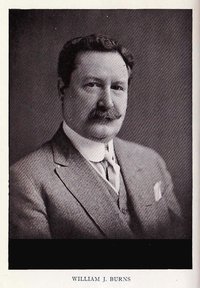
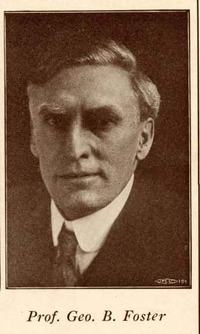
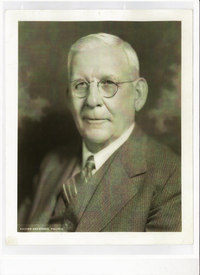
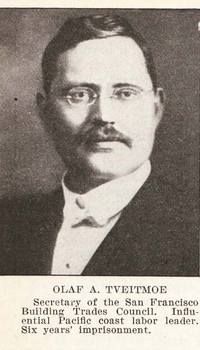
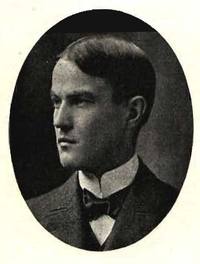

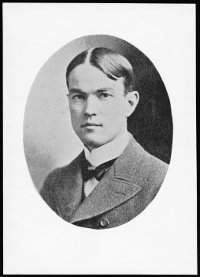


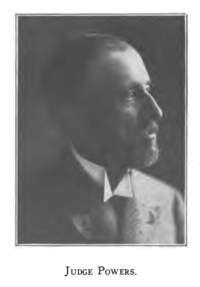
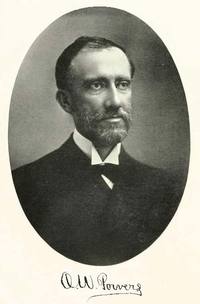

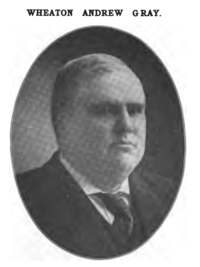
Darrow appeared to hate Gray and lashed out at him perhaps as much as he did against anyone he faced in a courtroom. At the very beginning of his closing argument Darrow said:
"I wish the attorneys on the other side to be kind enough to send for Gray. I have got some things to say about him, and I had rather he would be here, if he is not too big a coward. I don't think that Gray is much of a lawyer. I was wondering what he would be good for. If he had lived sixty years ago, I could have found a job that I think he would have been fitted for; but he is a misfit in this age. He would have been all right in the days of slavery for hard and cruel masters to hire to beat negroes. He is built for it, and he has got courage to beat a man when his hands are tied, Gray has. He might want his feet tied too; but he would have courage enough to beat them if they were securely fastened." Photo is from the History of the Bench and Bar of Southern California.
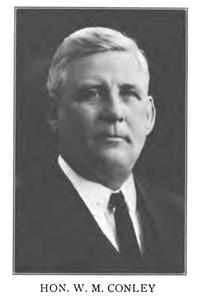
Photo from the Press Reference Library (Western Edition) Notables of the West (1915).
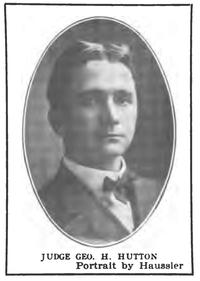
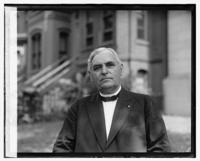
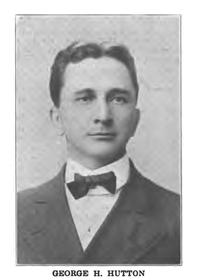
Photo from the Press Reference Library (Southwest Edition) Notables of the Southwest (1912).

Photo from Greater Los Angeles and Southern California: Portraits and Personal Memoranda by Robert Jones Burdette (1910).
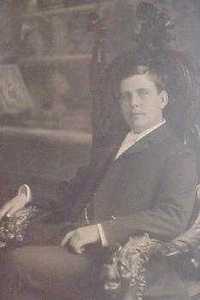
Courtesy of the Madera County, California GenWeb site hosted by Ken Doig.
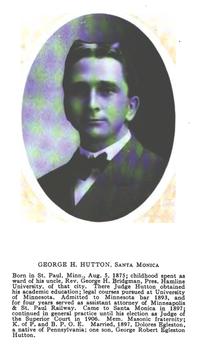
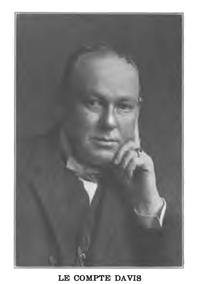
Photo from the Press Reference Library (Southwest Edition) Notables of the Southwest (1912).
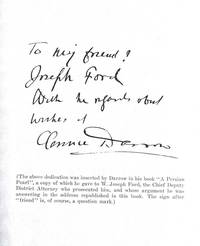
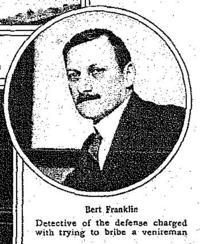
During the second bribery trial, Earl Rogers was supposed to cross-examine Franklin but he had to withdraw from the case because he was ill. So Darrow had to cross-examine Franklin. Darrow attacked Franklin but Franklin was defiant; he called Darrow a "briber" and flatly stated that he had bribed the juror at Darrow's direction. When Darrow asked why he had gone to the juror's home, Franklin replied directly, "To bribe Robert F. Bain, at your request." Darrow asserted that he had tried to get Bain stricken from the jury because he believed Bain was biased against labor unions, but that Franklin had kept him on the jury. Franklin denied this assertion.
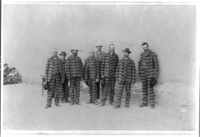
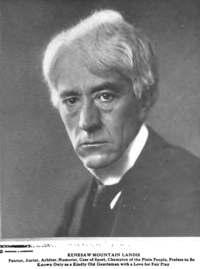
Photo from Illustrated World (1922).
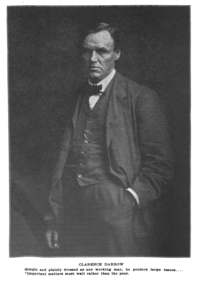

Photo from volume 45 of The American Review of Reviews (1912).
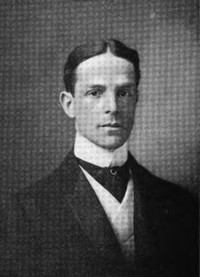
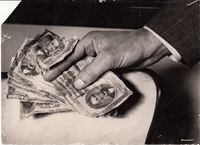
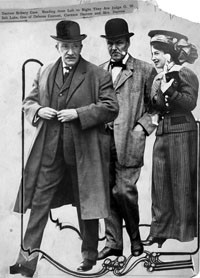
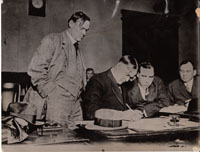
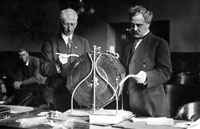
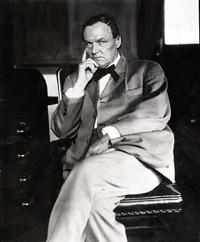
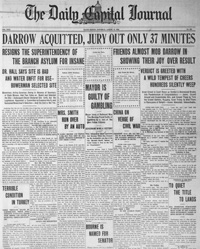
Photos

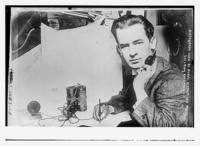
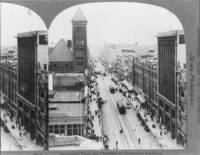

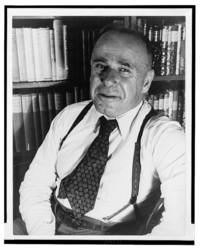
The Spirit of the Ghetto, 1902
Autobiography of a Thief, 1903
Spirit of Labor, 1907
Anarchist Woman, 1909
Types from City Streets, 1910
Enemies, 1916, co-written with his wife
Story of a Lover, 1919
A Victorian in the Modern World, autobiography, 1939. Library of Congress, Prints & Photographs Division, Carl Van Vechten Collection, LC-USZ62-132955.
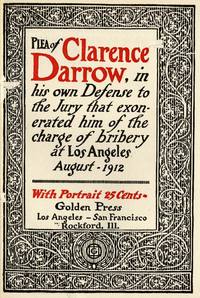
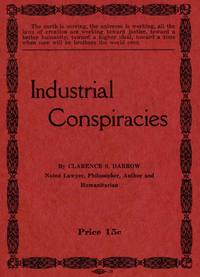
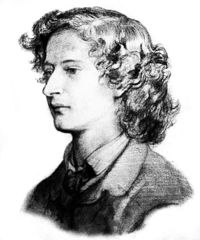

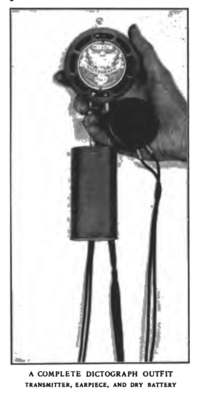
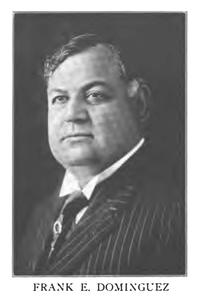
Photo from the Press Reference Library (Southwest Edition) Notables of the Southwest (1912).
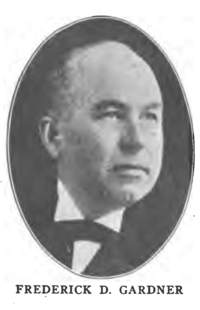
In a day or so a letter came containing the cheque for a thousand dollars from my unknown friend, Frederick D. Gardner, of St. Louis, and in the envelope was also a cheque from his wife for two hundred dollars. I used that money, but the case was soon afterward dismissed so that I did not need further help. There is a deep gulf between blank despair and the illusion of hope and comfort and confidence. Though the gulf between them is deep, often there is but a step across. I went home from the disagreement of the jury, sad and discouraged, but when I received the telegram from Mr. Gardner, and the letter, the sun shone bright again and the birds were singing in the trees."
